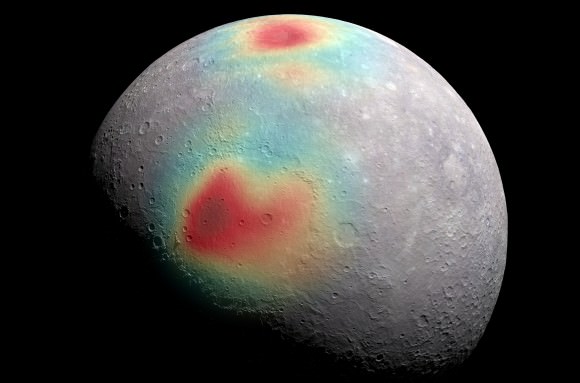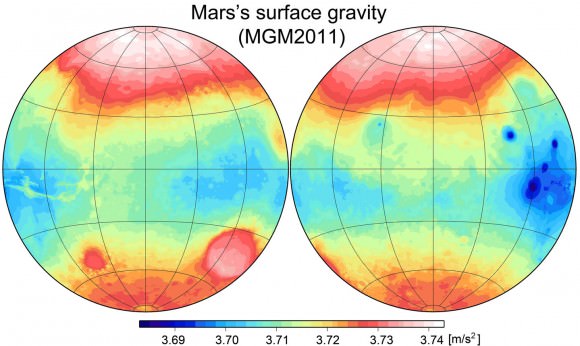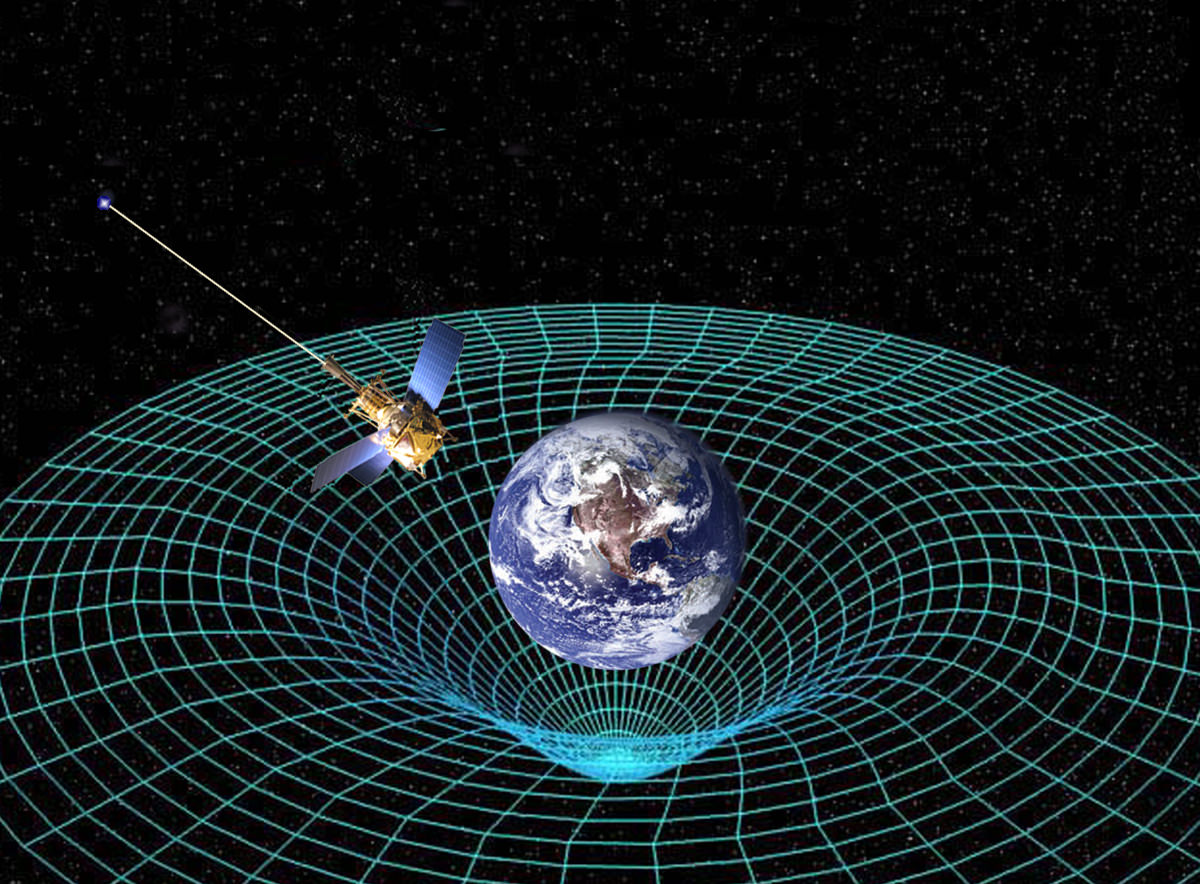Gravity is a fundamental force of physics, one which we Earthlings tend to take for granted. You can’t really blame us. Having evolved over the course of billions of years in Earth’s environment, we are used to living with the pull of a steady 1 g (or 9.8 m/s²). However, for those who have gone into space or set foot on the Moon, gravity is a very tenuous and precious thing.
Basically, gravity is dependent on mass, where all things – from stars, planets, and galaxies to light and sub-atomic particles – are attracted to one another. Depending on the size, mass and density of the object, the gravitational force it exerts varies. And when it comes to the planets of our Solar System, which vary in size and mass, the strength of gravity on their surfaces varies considerably.
For example, Earth‘s gravity, as already noted, is equivalent to 9.80665 m/s² (or 32.174 ft/s²). This means that an object, if held above the ground and let go, will accelerate towards the surface at a speed of about 9.8 meters for every second of free fall. This is the standard for measuring gravity on other planets, which is also expressed as a single g.
In accordance with Isaac Newton’s law of universal gravitation, the gravitational attraction between two bodies can be expressed mathematically as F = G (m¹m²/r²) – where F is the force, m1 and m2 are the masses of the objects interacting, r is the distance between the centers of the masses and G is the gravitational constant (6.674×10-11 N m2/kg2 ).
Based on their sizes and masses, the gravity on another planet is often expressed in terms of g units as well as in terms of the rate of free-fall acceleration. So how exactly do the planets of our Solar System stack up in terms of their gravity compared to Earth? Like this:
Gravity on Mercury:
With a mean radius of about 2,440 km and a mass of 3.30 × 1023 kg, Mercury is approximately 0.383 times the size of Earth and only 0.055 as massive. This makes Mercury the smallest and least massive planet in the Solar System. However, thanks to its high density – a robust 5.427 g/cm3, which is just slightly lower than Earth’s 5.514 g/cm3 – Mercury has a surface gravity of 3.7 m/s², which is the equivalent of 0.38 g.

Gravity on Venus:
Venus is similar to Earth in many ways, which is why it is often referred to as “Earth’s twin”. With a mean radius of 4.6023×108 km2, a mass of 4.8675×1024 kg, and a density of 5.243 g/cm3, Venus is equivalent in size to 0.9499 Earths, 0.815 times as massive, and roughly 0.95 times as dense. Hence, it is no surprise why the gravity on Venus is very close to that of Earth’s – 8.87 m/s2, or 0.904 g.
Gravity on the Moon:
This is one astronomical body where human beings have been able to test out the affects of diminished gravity in person. Calculations based on its mean radius (1737 km), mass (7.3477 x 10²² kg), and density (3.3464 g/cm³), and the missions conducted by the Apollo astronauts, the surface gravity on the Moon has been measured to be 1.62 m/s2 , or 0.1654 g.
Gravity on Mars:
Mars is also similar to Earth in many key respects. However, when it comes to size, mass and density, Mars is comparatively small. In fact, its mean radius of 3.389 km is the equivalent of roughly 0.53 Earths, while its mass (6.4171×1023 kg) is just 0.107 Earths. Its density, meanwhile, is about o.71 of Earths, coming in at a relatively modest 3.93 g/cm³. Because of this, Mars has 0.38 times the gravity of Earth, which works out to 3.711 m/s².

Gravity on Jupiter:
Jupiter is the largest and most massive planet in the Solar System. Its mean radius, at 69,911 ± 6 km, makes it 10.97 the times the size of Earth, while its mass (1.8986×1027 kg) is the equivalent of 317.8 Earths. But being a gas giant, Jupiter is naturally less dense than Earth and other terrestrial planets, with a mean density of 1.326 g/cm3.
What’s more, being a gas giant, Jupiter does not have a true surface. If one were to stand on it, they would simply sink until they eventually arrived at its (theorized) solid core. As a result, Jupiter’s surface gravity (which is defined as the force of gravity at its cloud tops), is 24.79 m/s, or 2.528 g.
Gravity on Saturn:
Like Jupiter, Saturn is a huge gas giant that is significantly larger and more massive than Earth, but far less dense. In short, its mean radius is 58232±6 km (9.13 Earths), its mass is 5.6846×1026 kg (95.15 times as massive), and has a density of 0.687 g/cm3. As a result, its surface gravity (again, measured from the top of its clouds) is just slightly more than Earth’s, which is 10.44 m/s² (or 1.065 g).
Gravity on Uranus:
With a mean radius of 25,360 km and a mass of 8.68 × 1025 kg, Uranus is approximately 4 times the size of Earth and 14.536 times as massive. However, as a gas giant, its density (1.27 g/cm3) is significantly lower than Earth’s. Hence, why its surface gravity (measured from its cloud tops) is slightly weaker than Earth’s – 8.69 m/s2, or 0.886 g.
Gravity on Neptune:
With a mean radius of 24,622 ± 19 km and a mass of 1.0243×1026 kg, Neptune is the fourth largest planet in the Solar System. All told, it is 3.86 times the size of Earth and 17 times as massive. But, being a gas giant, it has a low density of 1.638 g/cm3. All of this works out to a surface gravity of 11.15 m/s2 (or 1.14 g), which again is measured at Neptune’s cloud tops.
All in all, gravity runs the gamut here in the Solar System, ranging from 0.38 g on Mercury and Mars to a powerful 2.528 g atop Jupiter’s clouds. And on the Moon, were astronauts have ventured, it is a very mild 0.1654 g, which allowed from some fun experiments in near-weightlessness!
Understanding the effect of zero-gravity on the human body has been essential to space travel, especially where long-duration missions in orbit and to the International Space Station have been concerned. In the coming decades, knowing how to simulate it will come in handy when we start sending astronauts on deep space missions.
And of course, knowing just how strong it is on other planets will be essential to manned missions (and perhaps even settlement) there. Given that humanity evolved in a 1 g environment, knowing how we will fare on planets that have only a fraction of the gravity could mean the difference between life and death.
We have written many interesting articles about gravity here at Universe Today. Here’s How Fast Is Gravity?, Where Does Gravity Come From? and How We Know Gravity Is Not (Just) A Force.
And here’s Could We Make Artificial Gravity? and Does “Spooky Action” Define Gravity?
For more information, check out NASA’s page titled “The Constant Pull of Gravity” and Newton’s law of gravity.
Astronomy Cast also has an episode, titled Episode 102: Gravity.


Maybe someone can help me out with a confusion I’ve had for a long time. The Minute Physics video said that light is attracted by gravity; and Henry is generally very precise with his words, so I guess I should take that literally.
But I’ve also heard it said that light follows the underlying distortion of space. And that makes sense to me, because light is said to have no mass: the reason it is able and compelled to travel at the cosmic speed limit.
Could anyone help clear up my confusion?
You might find some answers in:
“Beyond Einstein: non-local physics” .html by Brian Fraser (2015)
Hi Brian. I have to confess, I’m not a believer in the Electric Universe hypothesis, ether or gravity being faster than ‘c’. I’m afraid the paper can’t help me.
But I’m still confused if someone else could help.
I’m not a believer in the Electric Universe hypothesis either.
If you don’t understand the issues of “locality” and “non-locality”, the rest of the paper won’t be of use to you.
Please add the appropriate information for planet Pluto. Thank you.
Laurel, how expected! And no thank you, but thanks for the suggestion.
But why not include Pluto? You did include the Moon and Pluto is still a planet, no matter which side of the argument you support.
Actually, Pluto is not a planet by IAU convention. It is a dwarf planet, and Laurel’s disagreement with that is why she is demanding it be included. And I included the Moon because it is the only astronomical object humans have walked on other than Earth.
IAU convention represents only one side in an ongoing debate. Many planetary scientists do still consider Pluto–and all dwarf planets–to be a subclass of planet. New Horizons’ data has shown it is more geologically active than Mars and has the same complex processes and varied terrains seen on the larger planets.
So here is the info. Pluto’s mean radius is 1,187±4 km[5] or
0.18 Earths. Its mass is (1.303±0.003)×1022 kg[5] or
0.00218 Earths. Its mean density is 1.860±0.013 g/cm3[5], and its surface gravity is 0.620 m/s2[e]
0.063 g. Because Pluto has such low gravity, a person who weighs 150 pounds on Earth would weigh 10 pounds on Pluto. Its composition is approximately 70 percent rock.
Cool and interesting, particularly Saturn, Uranus and Neptune which sort of fly in the face of what I’d expect.
Also, just fyi, I think you mean “gamut” in this sentence> “gravity runs the gambit here in the Solar System”.
I think you’re correct 🙂
Artificial Gravity:
Can’t make it. Got it. But there is something we can make.
Magnetism. Or an electromagnet.
Add in clothes made with linked steel fibers and you get full sleeved shirts and pants holding you down to the floor. Sure, everything else not made of metal still floats (which may not be that bad of an idea). But at least people in zero or micro gravity wouldn’t be floating around.
And electromagnetism can be controlled fine enough that it could keep a person from acting like a ping pong ball when rapid movements do occur. But the person will still feel the acceleration and deceleration, so the movement still has to be within limits. Much like the limit on military aircraft. A modern jet can be made that it will kill it’s pilot by banking too fast. So, there is a limit of around 11g that an aircraft can bank. Well, that would also apply to a spaceship. There would be a limit on how fast it could turn or thrust. But walking around on a deck? Very much possible.
This concept can be applied to cities and communities on the moon, mars, or other places we may be going to in the future. The door is open.